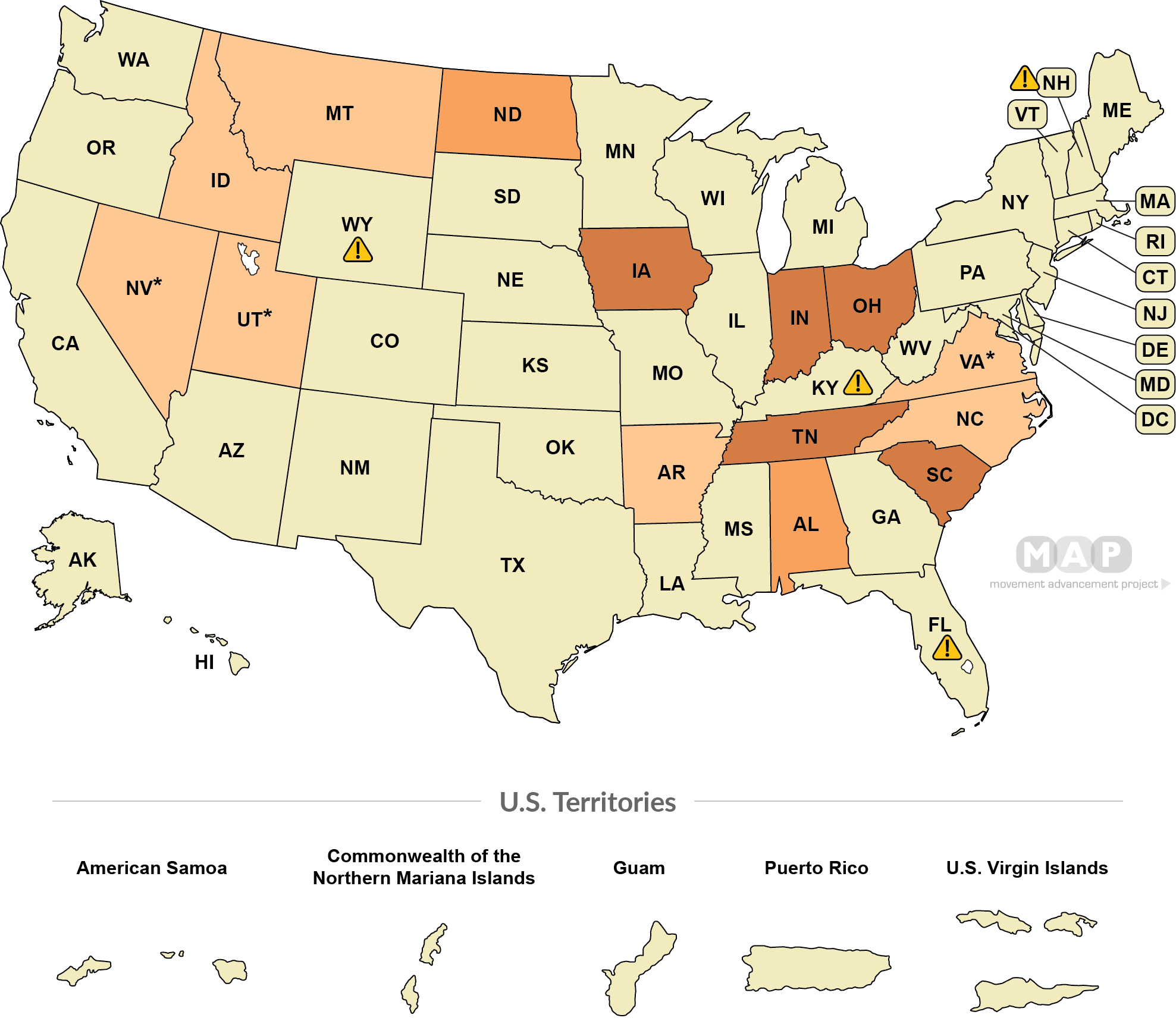Since 2020, there has been a growing legislative attack on transgender people, and particularly on transgender youth. This includes a growing number of bills (and now laws) that explicitly require school staff—and in some cases, any government or public employee—to out transgender youth to their families, often without regard for whether doing so might put the child at risk of harm. Importantly, however, these laws vary in their actual requirements, as shown below. Click the "Citations & More Information" orange button for more detail.

-
State law forces the outing of transgender youth if they make specific disclosures or requests about their gender identity to school staff
(6 states)
-
State law requires forced outing of transgender youth, but only if parents ask school staff for the information
(2 states)
-
State law requires forced outing of transgender youth before school staff can use a student’s preferred name/pronouns, but a student’s mere request to use a different name or pronouns does not itself require forced outing
(7 states)
-
State law does not force the outing of transgender youth in schools
(35 states , 5 territories + D.C.)
-

State does not force outing but may contribute to hostile school climate (see note beneath map)
(5 states)
*Notes:
--States with a caution icon have policies that vary, but generally have vague requirements to notify parents about any “health” or behavioral concern, but that do not make any explicit mention of gender or gender identity. Because these laws could be broadly interpreted and used to target both transgender youth and LGBTQ youth in general, these may contribute to a hostile school climate for LGBTQ youth even without explicitly requiring forced outing. Note that laws that require general parental access to student records are redundant of existing federal law, and so are not included here. See the "Citations" tab or click "Citations & More Information" beneath the map legend for more detail on each state's policy.--Note, Nevada’s policy is via regulation, not legislation.
--Note, Utah’s law applies only to official changes to a student’s education records (e.g., their gender marker or name officially noted on their record), not daily interaction with the student (e.g., conversational use of preferred name/pronouns).
--Note, Virginia’s policy is via agency policy, not legislation or regulation. However, state law requires school districts to adopt this model policy—though there has been resistance, and so implementation or enforcement may vary across the state. See "Citations & More Information" for more detail.
Recommended citation:
Movement Advancement Project. [Year of access]. "Equality Maps: Forced Outing of Transgender Students." www.mapresearch.org/equality-maps/youth/forced_outing. Accessed 01/02/2026.
Percent of Transgender Youth Covered by Laws
*Note: These percentages reflect estimates of the transgender youth (ages 13-17) population living in the 50 states and the District of Columbia. Estimates of transgender youth in the U.S. territories or under age 13 are not available, and so cannot be reflected here. Population estimates are from The Williams Institute.
7 % of transgender youth (ages 13-17) live in states that force the outing of transgender youth in schools if they make specific disclosures or requests about their gender identity to school staff
1 % of transgender youth (ages 13-17) live in states that force the outing of transgender youth, but only if parents ask school staff for the information
7 % of transgender youth (ages 13-17) live in states that require forced outing of transgender youth before school staff can use a student’s preferred name/pronouns, but a student’s mere request to use a different name or pronouns does not itself require fo
85 % of transgender youth (ages 13-17) live in states that do not force the outing of transgender youth in schools



